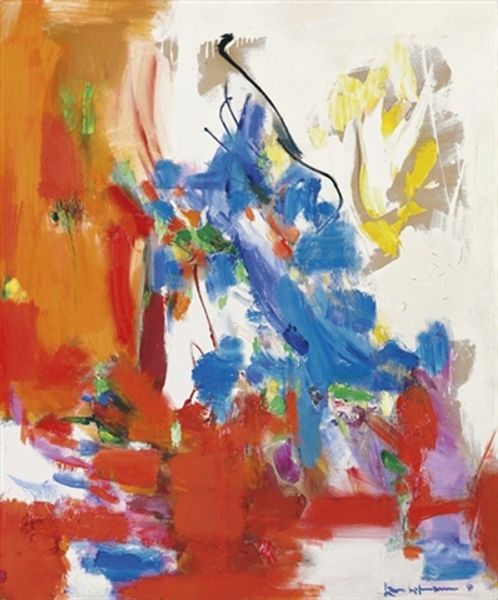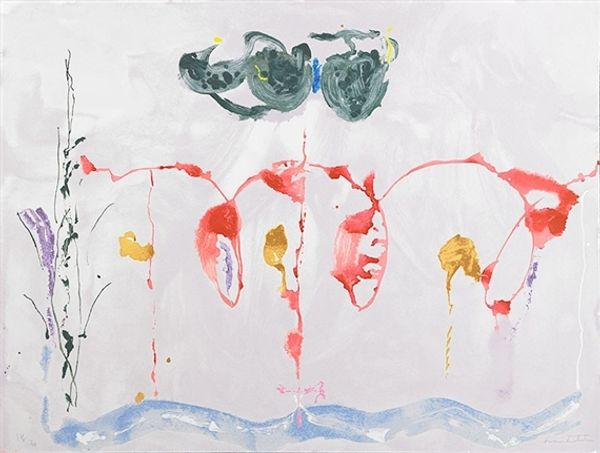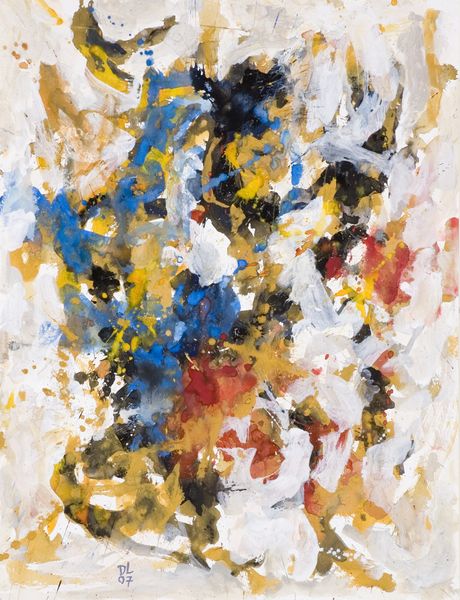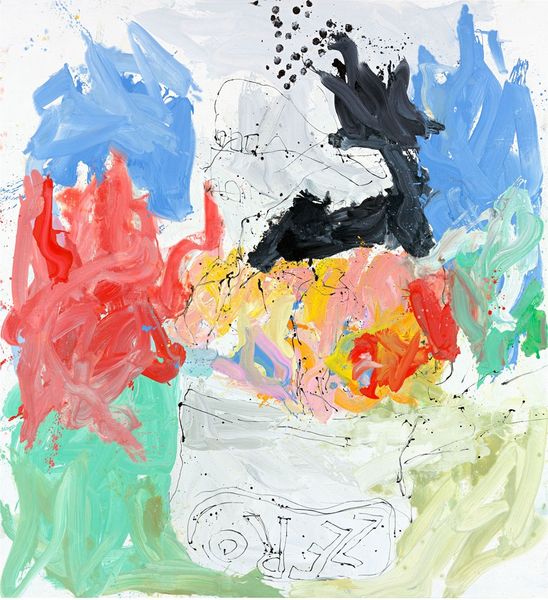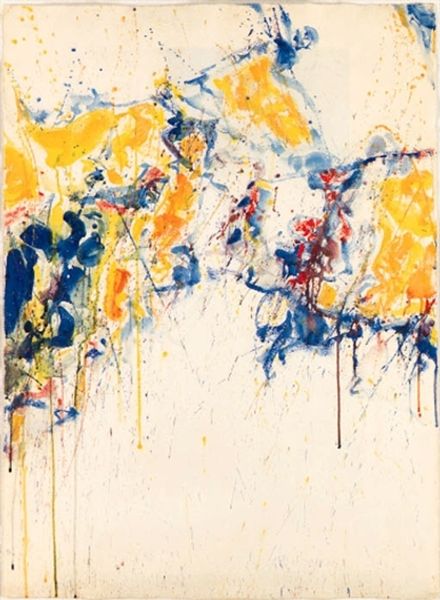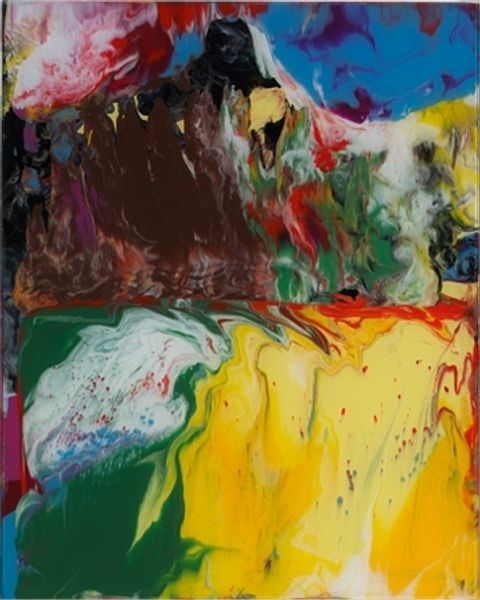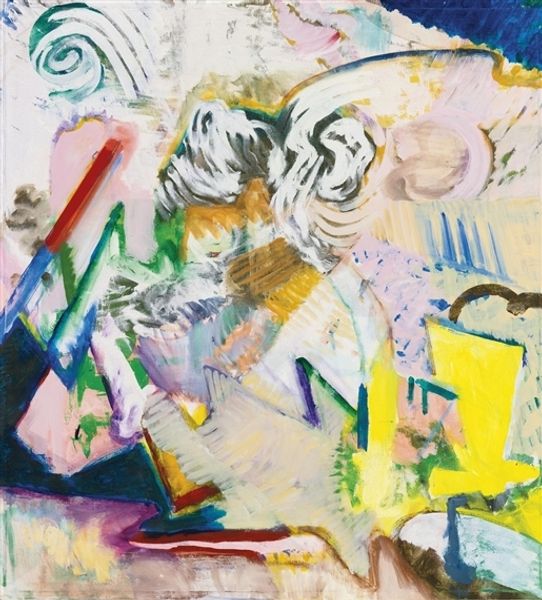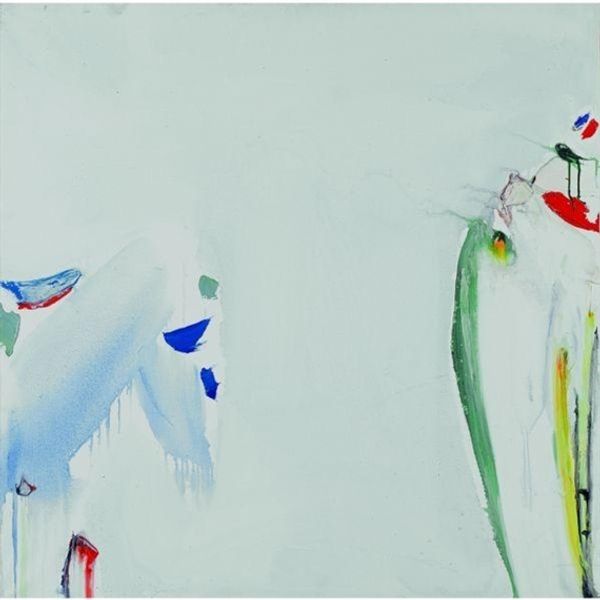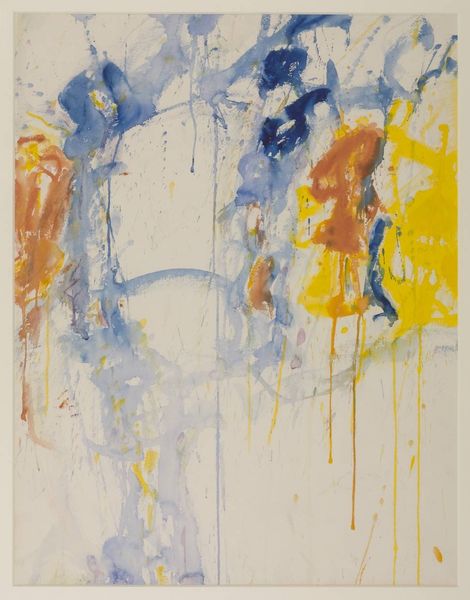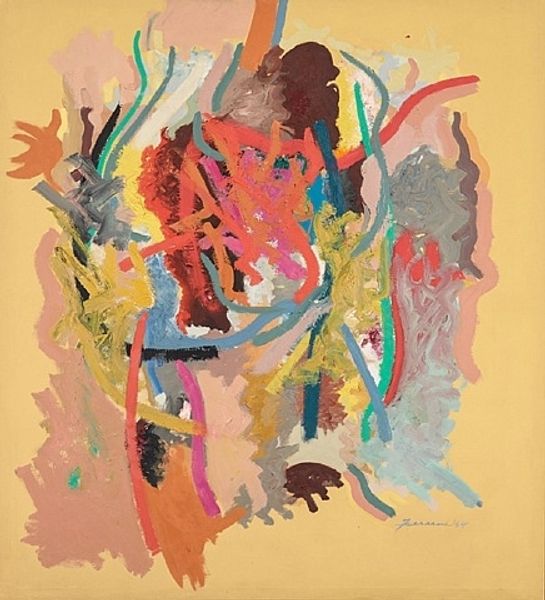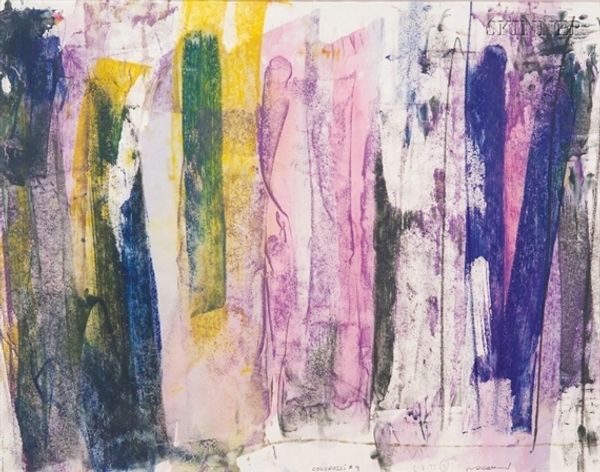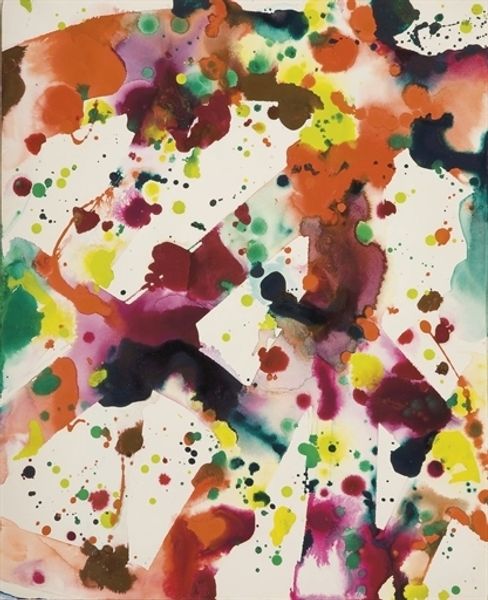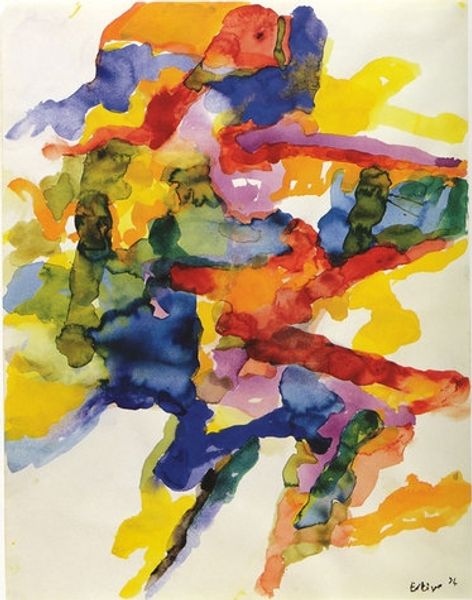
Anselm hatte eine Marienerscheinung, er sah die Madonna in beige blauem Kleid, hier trägt sie nur eine blaue Schürze 2008
0:00
0:00
Copyright: Georg Baselitz,Fair Use
Curator: Georg Baselitz created this work in 2008. It's acrylic on canvas, and the title is, “Anselm hatte eine Marienerscheinung, er sah die Madonna in beige blauem Kleid, hier trägt sie nur eine blaue Schürze.” Which translates to “Anselm had a Marian apparition, he saw the Madonna in beige blue dress, here she only wears a blue apron.” Quite a mouthful, isn't it? Editor: It certainly is! My immediate impression is one of soft ambiguity. The palette feels pastel, almost faded, but the strokes themselves are quite aggressive. It gives off this feeling of a memory struggling to be formed. Curator: Baselitz is well-known for his use of raw materials and gestural application, but there is that softness you noticed. His method often involves re-working and overpainting. So, if we consider his material handling, how does the visible process inform its overall meaning? Editor: Considering Baselitz’s practice, this is certainly a provocative piece. Referencing Anselm Kiefer, it confronts the idealized vision of the Madonna with something more raw, almost visceral. The Madonna in a blue apron, as opposed to the traditional blue dress, suggests domestic labor, the working class, stripping away the layers of myth and divine representation. The blue is just applied in messy daubs that contrast with the religious subject matter and makes a new claim of female representation. Curator: Absolutely. There’s a tension between the supposed holiness of the subject matter and the materiality of the paint itself. It makes me think of the artist’s labor and that of the female figure he depicts. How those two things might be intertwined within a societal context? Editor: And given Baselitz’s engagement with German history, it prompts broader questions about how we consume images and myths that influence cultural constructions of gender and religion, especially in postwar Europe. Curator: The way Baselitz uses paint, not to create an illusion, but to declare its own physical presence, to almost challenge our perceptions, definitely makes us question that consumption, as you call it. It invites us to think about what labour produces not just within the frame, but also in relation to social constructs of female identity. Editor: A powerful dialogue sparked by layers of pigment and thoughtful construction, leaving us to consider the materials of representation. Curator: Yes, the sheer physicality, the manipulation of medium, it makes for a complex, and rather challenging, viewing experience.
Comments
No comments
Be the first to comment and join the conversation on the ultimate creative platform.
